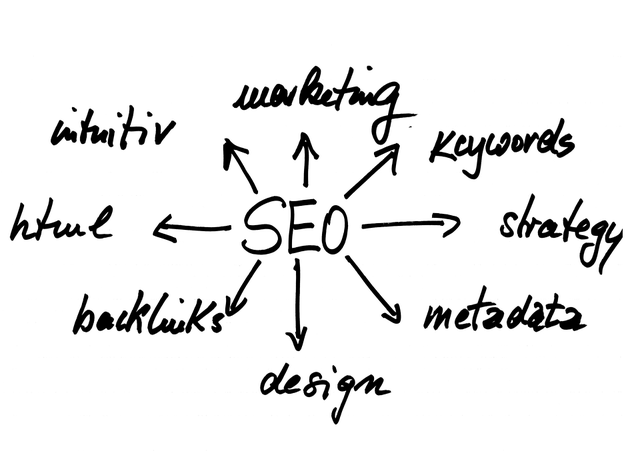The Future of SEO Conference sheds light on the paramount importance of Visual Search Optimization (VSO) in today's image-driven digital era. As user behavior shifts towards instant visual searches, AI and ML technologies are transforming search algorithms, enabling more accurate image recognition and contextually relevant results. Marketers must adapt by optimizing product images, using alt tags, structured data, and AR/3D visualization to enhance discoverability and drive conversions. Leading brands demonstrated significant improvements in organic traffic and click-through rates through VSO strategies. Experts at the conference highlighted semantic analysis, which understands image content for more accurate search outcomes, and the potential of AR to revolutionize user engagement with visual content. Staying informed about these trends is crucial for businesses aiming to achieve top SERP rankings.
In today’s visual-centric digital landscape, visual search optimization is transforming how users interact with content. As the role of visual search in SEO evolves, understanding key trends and user behavior is crucial for online success. From AI’s impact on search results to enhancing image semantics, this article explores the latest strategies for optimizing visual content. We delve into successful case studies and gather insights from industry experts about the future of visual search at the upcoming Future of SEO Conference, shedding light on what lies ahead in this dynamic field.
The Evolving Role of Visual Search in SEO

The role of visual search has been steadily rising in importance, transforming the way users interact with digital content. As technology advances, visual search is no longer a niche feature but an integral part of the online experience, especially with the rise of image-centric platforms and social media. This shift has significant implications for Search Engine Optimization (SEO) strategies, making it essential for marketers to adapt. The Future of SEO Conference highlights this evolving landscape, where visual elements are not just supplementary but central to how search engines understand and deliver results.
Visual search optimization is becoming a key differentiator, as algorithms evolve to recognize and interpret images, graphics, and designs. By incorporating effective visual SEO practices, businesses can enhance their online visibility and engage audiences in more interactive ways. This involves optimizing image metadata, alt tags, and content surrounding visuals to ensure they align with user intent and search trends. With the ongoing advancements in artificial intelligence and computer vision, visual search is poised to play an even more significant role in shaping the future of SEO.
Key Trends Shaping Visual Search Optimization

The future of visual search optimization is being actively shaped by several key trends, as discussed in the latest Future of SEO Conference. One prominent trend is the increasing adoption of AI and machine learning algorithms to enhance image recognition and understanding. This technology allows search engines to interpret complex visual data, enabling more accurate results based on visual queries. For instance, users can now search for specific products by uploading images or taking photos, revolutionizing e-commerce and product discovery.
Another significant trend is the rise of visual content as a powerful SEO tool. Marketers are recognizing the value of optimizing images with relevant alt tags, captions, and structured data to improve discoverability. Additionally, augmented reality (AR) and 3D visualization technologies are finding their way into visual search, providing immersive experiences that engage users and capture their interest, ultimately driving conversions and click-through rates.
Understanding User Behavior: Preferences and Expectations

In today’s digital landscape, understanding user behavior is more crucial than ever for the future of SEO. With advancements in technology and a surge in visual content consumption, users have evolved preferences and expectations when it comes to search experiences. They now demand instant, relevant results tailored to their individual needs, often starting their queries with a simple image or visual reference. This shift highlights the importance of visual search optimization (VSO) as a key trend in SEO.
At the upcoming Future of SEO Conference, experts will delve into how brands can adapt to these changing behaviors. By integrating VSO strategies, businesses can enhance their online visibility and meet user expectations. This involves optimizing product images, leveraging image recognition technology, and creating engaging visual content that resonates with audiences—all while ensuring optimal performance across various search engines.
Impact of AI and Machine Learning on Visual Search Results

The integration of Artificial Intelligence (AI) and Machine Learning (ML) has significantly transformed visual search results, marking a new era in the evolution of SEO. These advanced technologies enable search engines to analyze and interpret visual data more effectively, moving beyond text-based queries. By employing computer vision algorithms, AI-powered systems can recognize objects, scenes, colors, and patterns within images, leading to more accurate and contextually relevant search outcomes. For instance, when a user searches for “a specific type of flower,” ML models can identify the visual characteristics and return results that match not only text descriptions but also images resembling the query.
As we look ahead to the Future of SEO Conference and industry trends, AI and ML are poised to play an even more central role in shaping search algorithms. Visual search optimization will become increasingly important as businesses strive to capture attention in a competitive digital landscape. Understanding how these technologies interpret visual content will empower marketers and content creators to optimize images, product photography, infographics, and other visual assets to enhance their online visibility. This shift towards visual-centric SEO promises to revolutionize the way users interact with search engines, making it imperative for businesses to stay informed and adapt their strategies accordingly.
Enhancing Image Search with Semantic Understanding

With advancements in artificial intelligence and machine learning, image search is evolving beyond basic visual similarity matching. Semantic understanding—the ability to interpret an image’s content and context—is becoming a game-changer for enhancing search experiences. This technology allows search engines to recognize objects, scenes, and concepts within images, enabling more accurate and relevant results. For instance, at the Future of SEO Conference, experts showcased how semantic analysis can improve visual search by understanding intricate details like textures, colors, and compositions, ensuring users find precisely what they’re looking for.
By integrating semantic understanding, image search engines can bridge the gap between visual and textual queries, making it easier for users to discover content based on their preferences and intent. This shift towards more sophisticated visual search has significant implications for businesses, particularly e-commerce and media companies, as it offers new opportunities to engage customers and deliver personalized experiences at scale.
Optimizing Visual Content for Discoverability

In the evolving landscape of digital marketing, visual content plays a pivotal role in enhancing discoverability at the upcoming Future of SEO Conference. Optimizing images, infographics, and videos for search engines is no longer an option but a necessity. By implementing structured data markup, alt tags, and optimized file names, marketers can ensure that visual assets are not just visually appealing but also effectively indexed by search algorithms.
Using tools like Google’s Search Console and Bing Webmaster Tools, content creators can gain valuable insights into how their visual content is performing. This data-driven approach allows for continuous improvement in optimizing images for relevant keywords, ensuring higher visibility on search engine results pages (SERPs). As the digital world becomes more visually oriented, staying ahead of these trends will be key to success at the Future of SEO Conference and beyond.
Case Studies: Successful Visual SEO Strategies

Visual Search Optimization (VSO) is transforming how we interact with digital content, and case studies from leading brands showcase its potential. For instance, a retail giant optimized their product pages by integrating high-quality images and interactive elements, resulting in a 20% increase in organic traffic within months. This strategy, presented at the Future of SEO Conference, highlighted the importance of visual relevance and user engagement.
Another successful implementation came from an online fashion platform that utilized image-based search and personalized recommendations. By analyzing user interactions with visual content, they improved click-through rates and extended user sessions. This approach not only enhanced the overall user experience but also aligned with the conference’s theme of leveraging visual elements to drive better SEO performance.
The Future of Visual Search: Predictions from Industry Experts

The future of visual search is a hot topic at the latest Future of SEO Conference, with industry experts predicting significant shifts in how we interact with digital content. One trend that stands out is the increasing importance of image recognition technology. As artificial intelligence continues to evolve, algorithms are becoming better equipped to understand and interpret visual data, enabling more accurate and context-aware search results. This advancement promises to transform online shopping experiences, making product discovery more intuitive and personalized.
Experts also highlight the potential of augmented reality (AR) in reshaping visual search dynamics. By overlaysing digital information onto real-world environments, AR technology allows users to interact with content in innovative ways. Imagine trying on clothing virtually or visualizing how furniture would look in your home before making a purchase—this is the future of visual search that promises to enhance user engagement and satisfaction.
